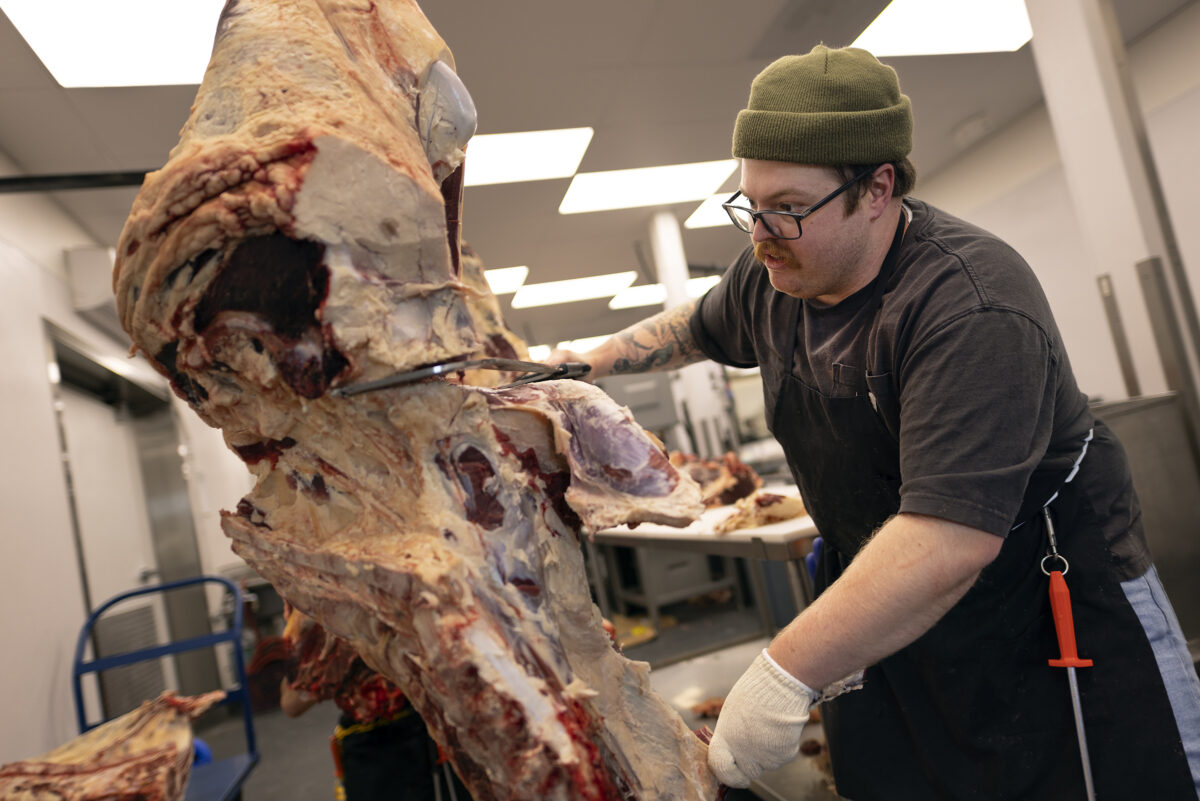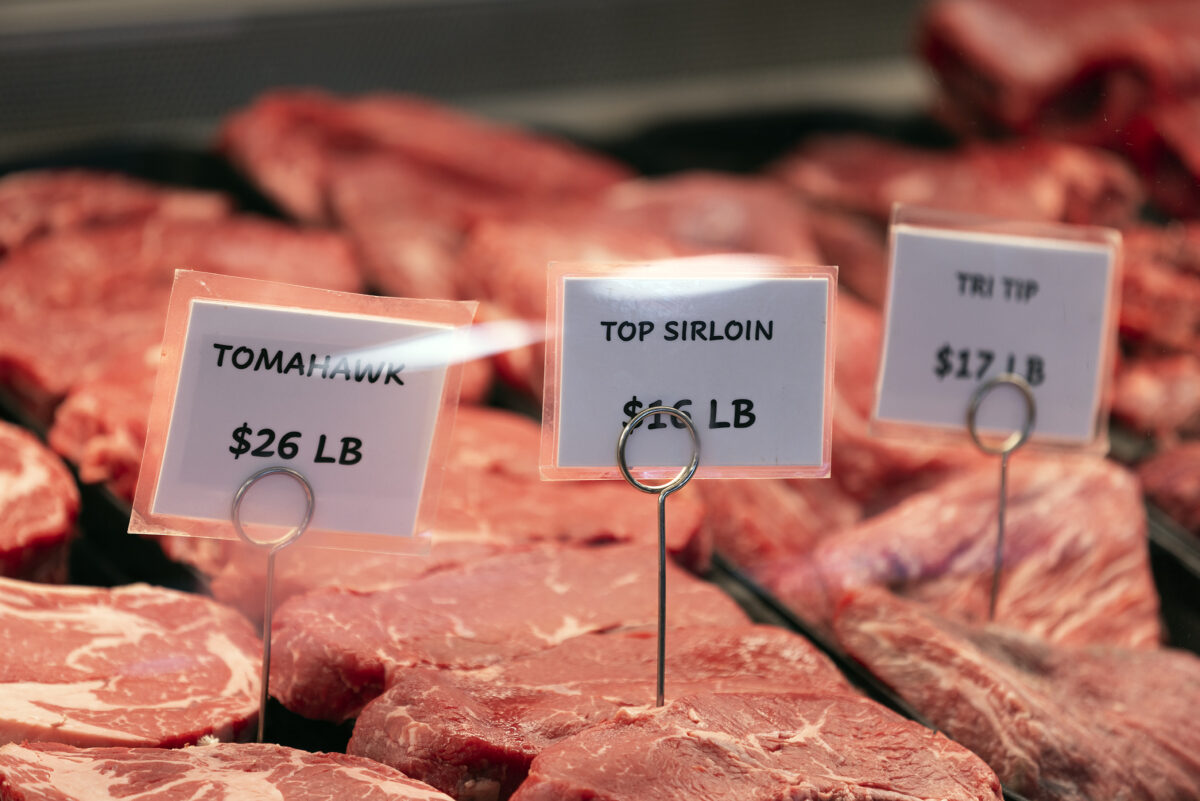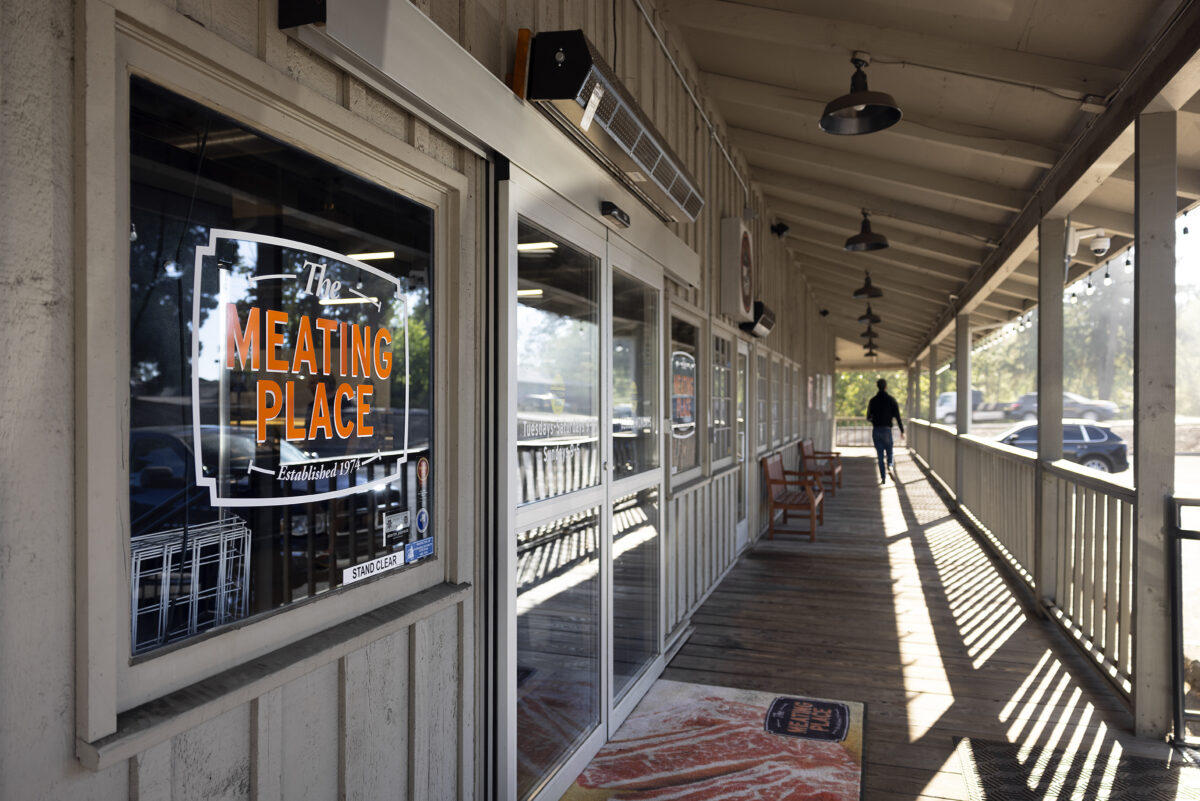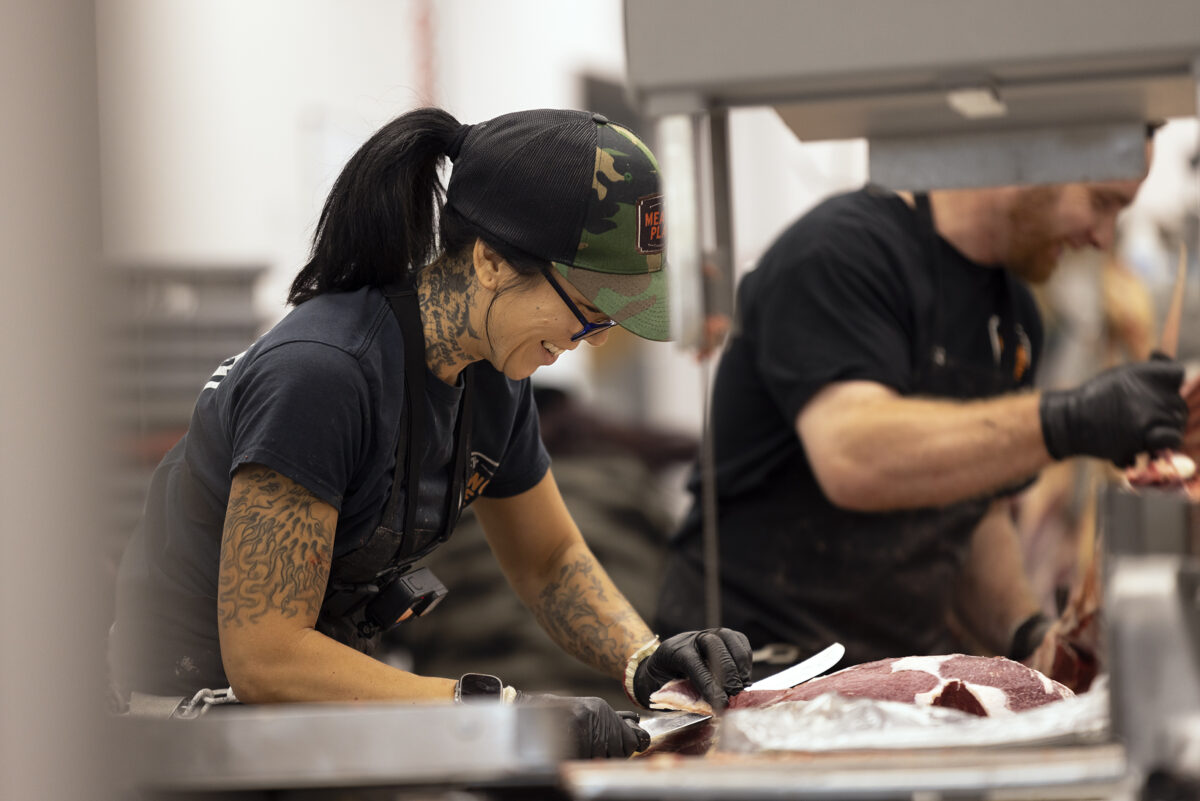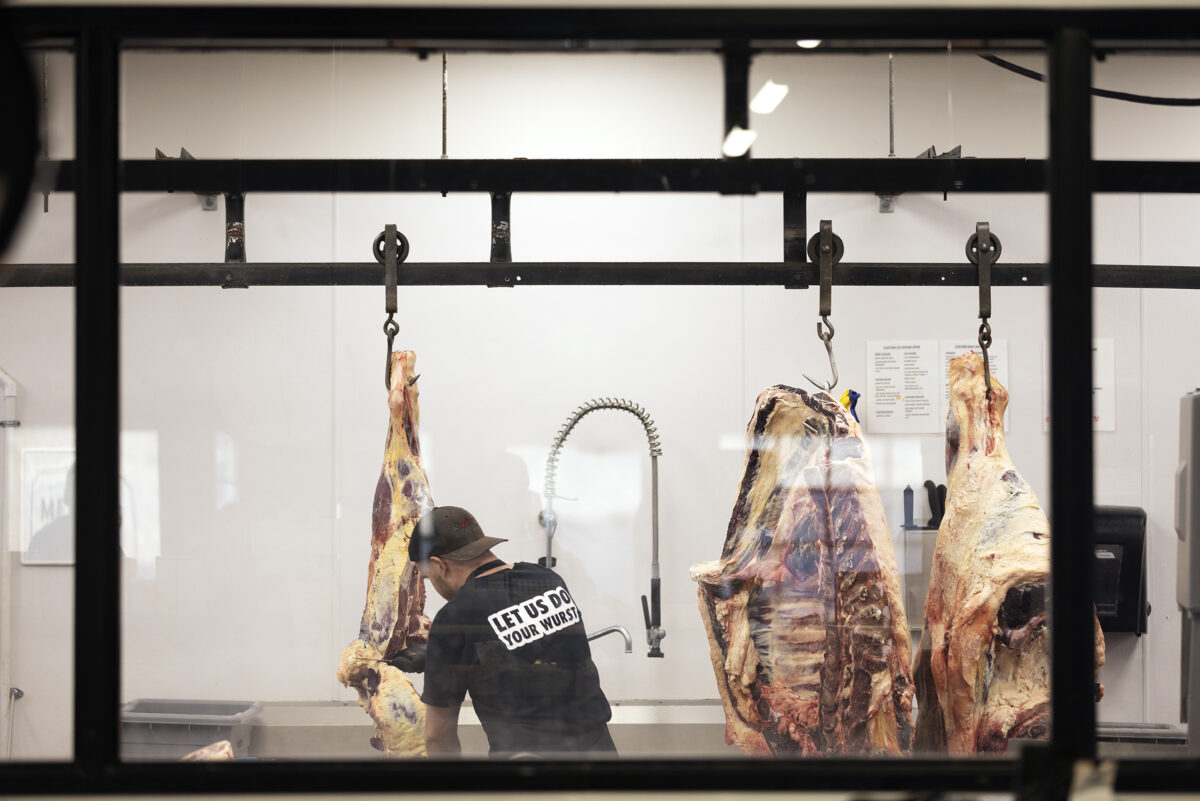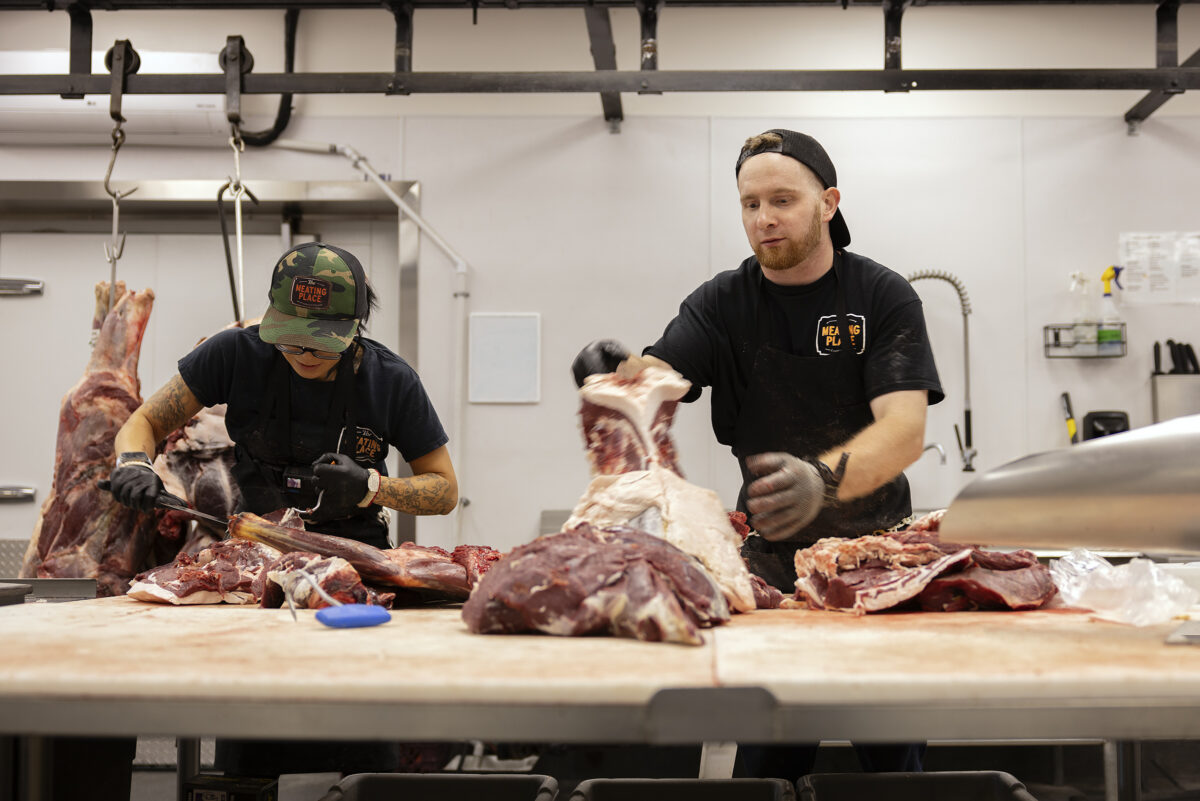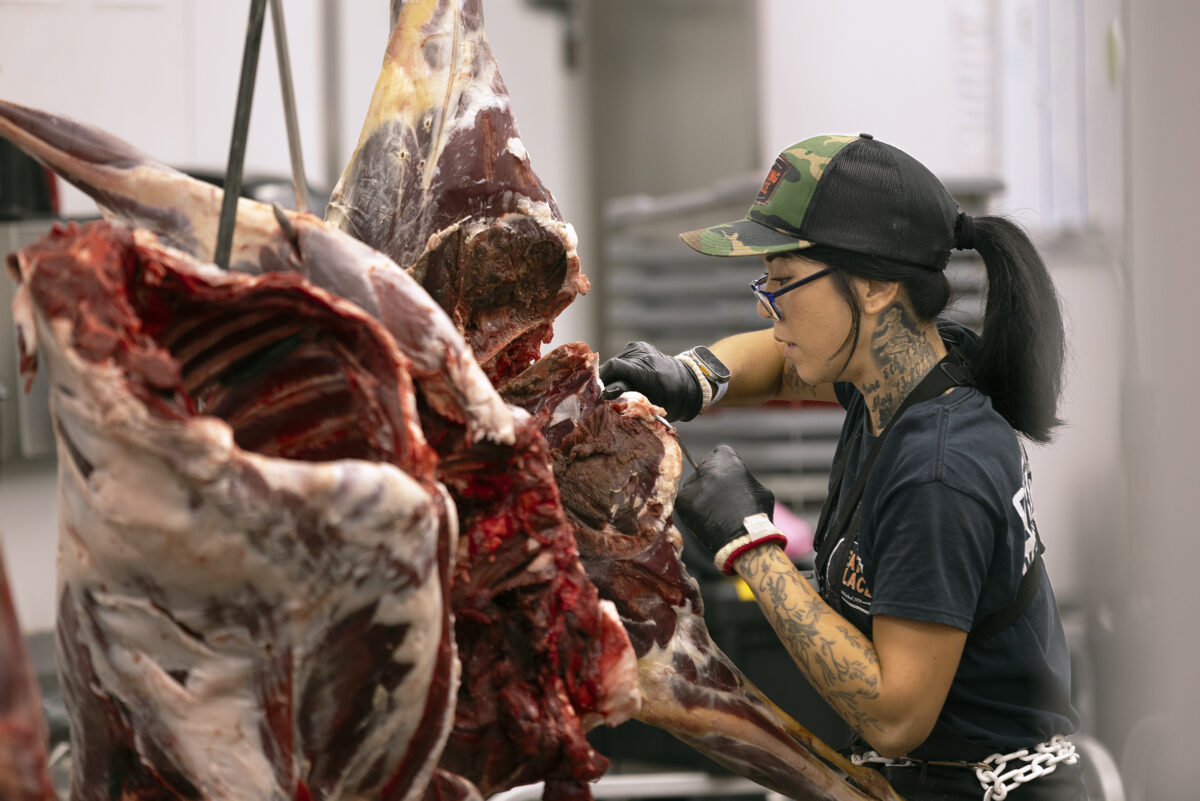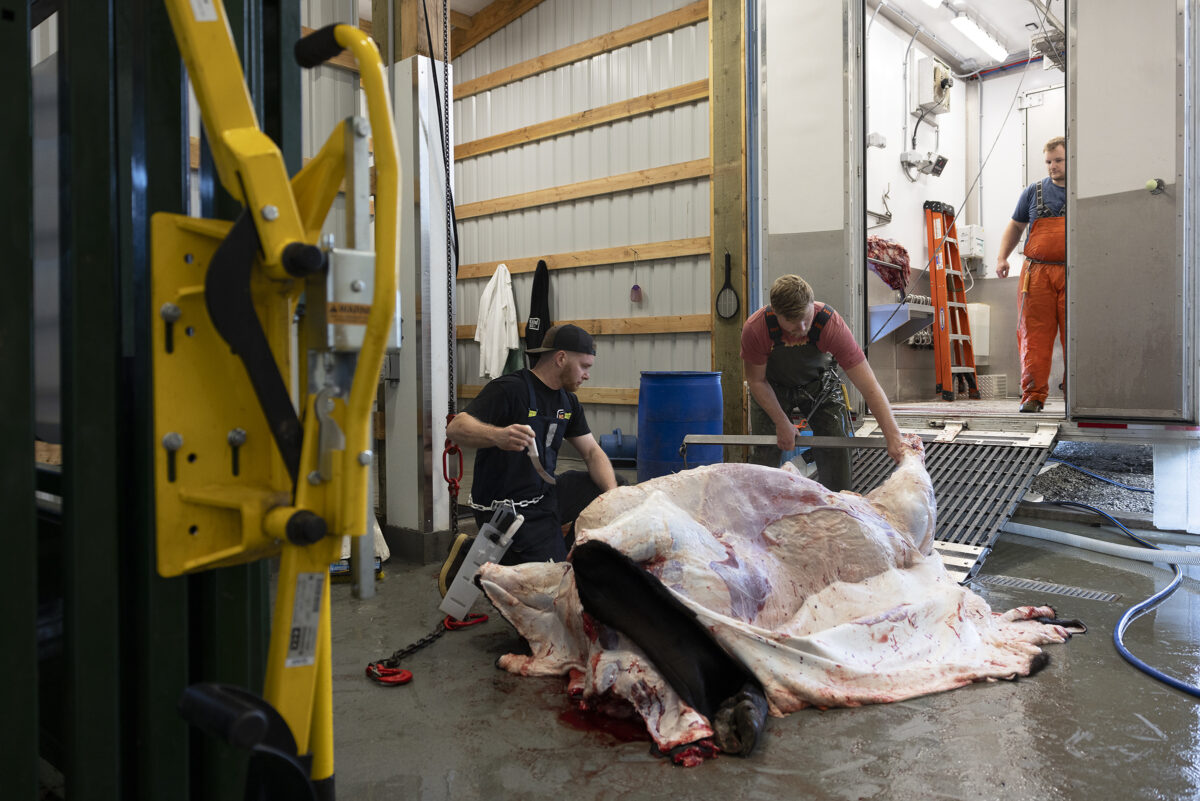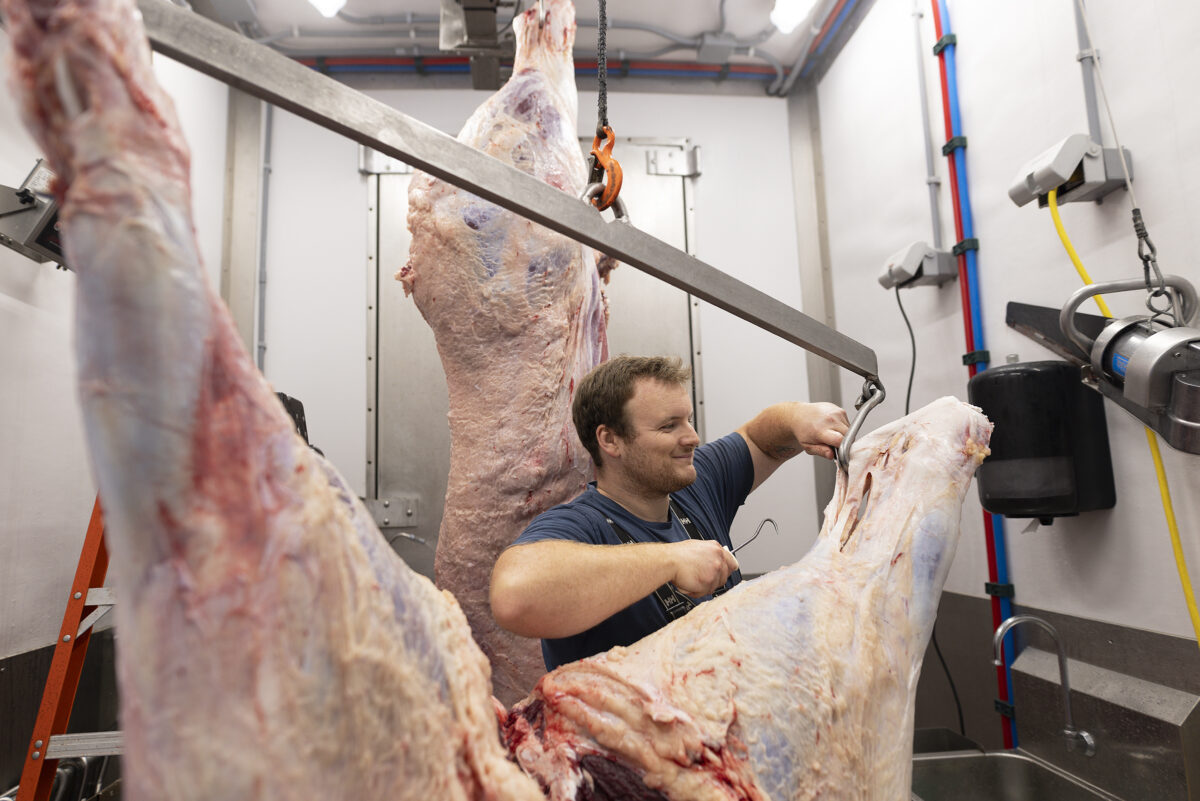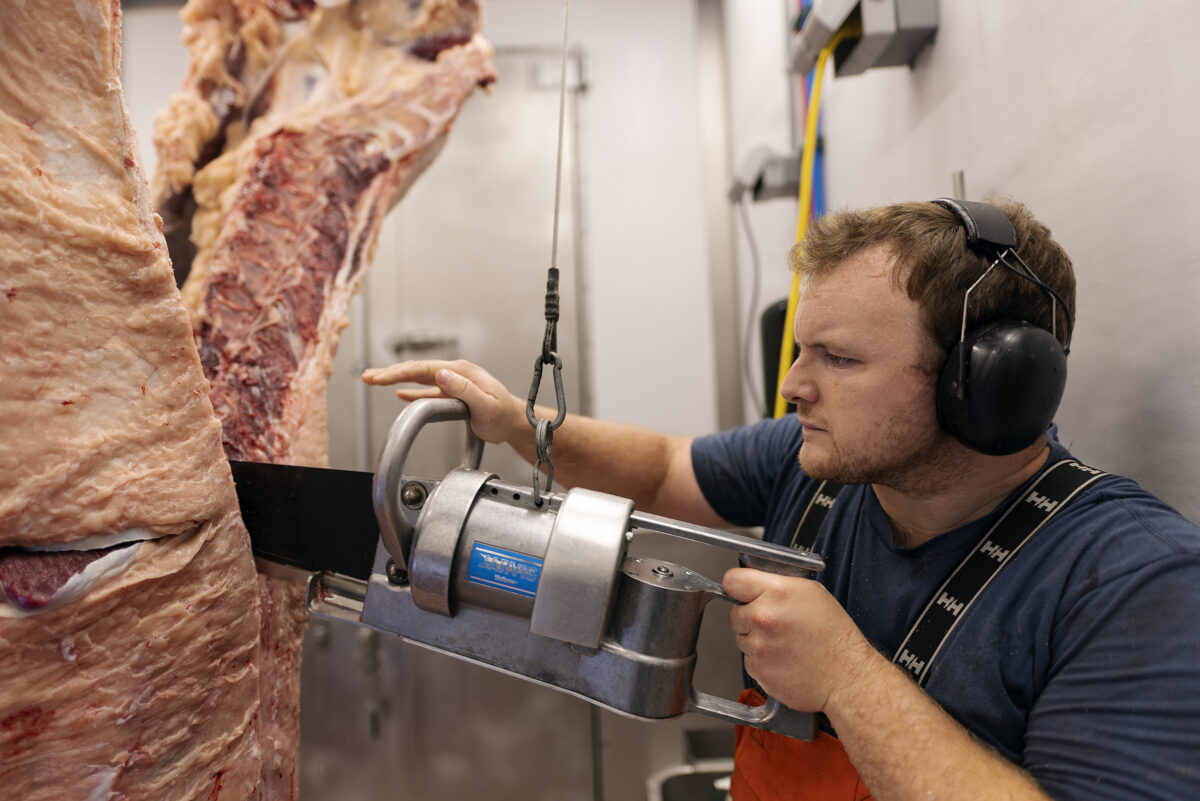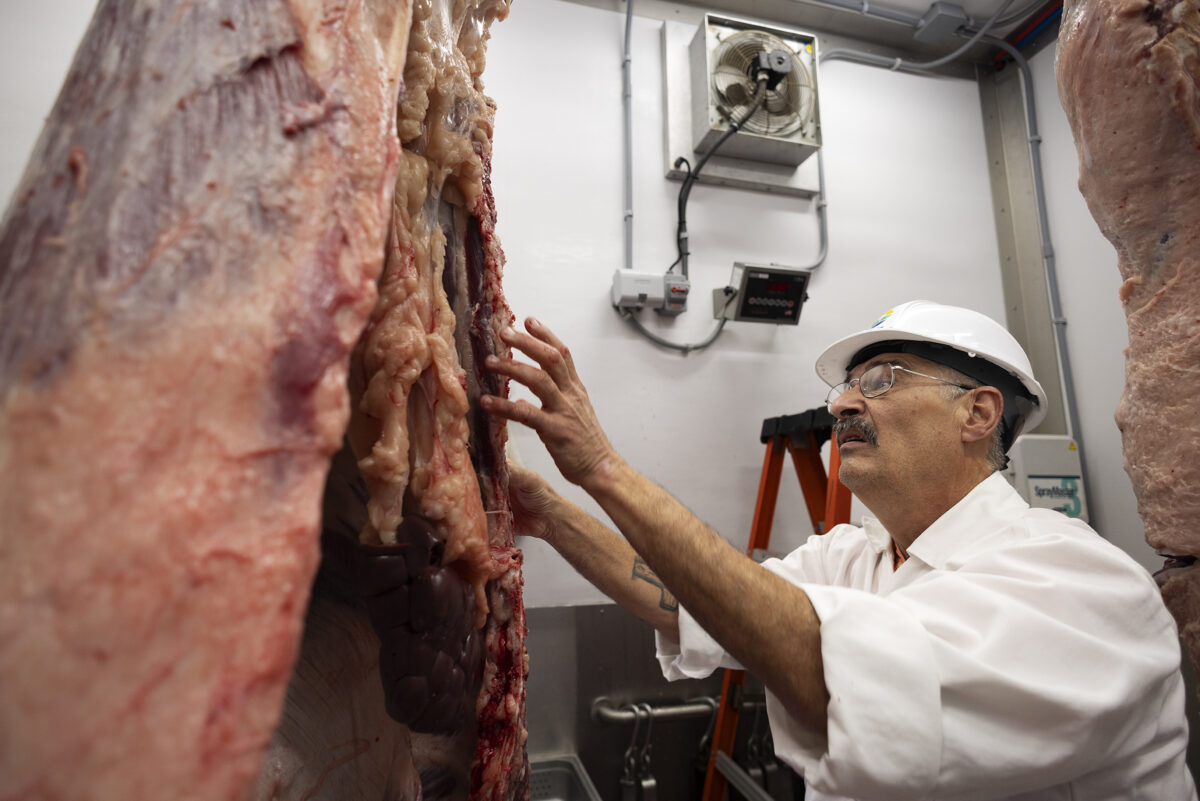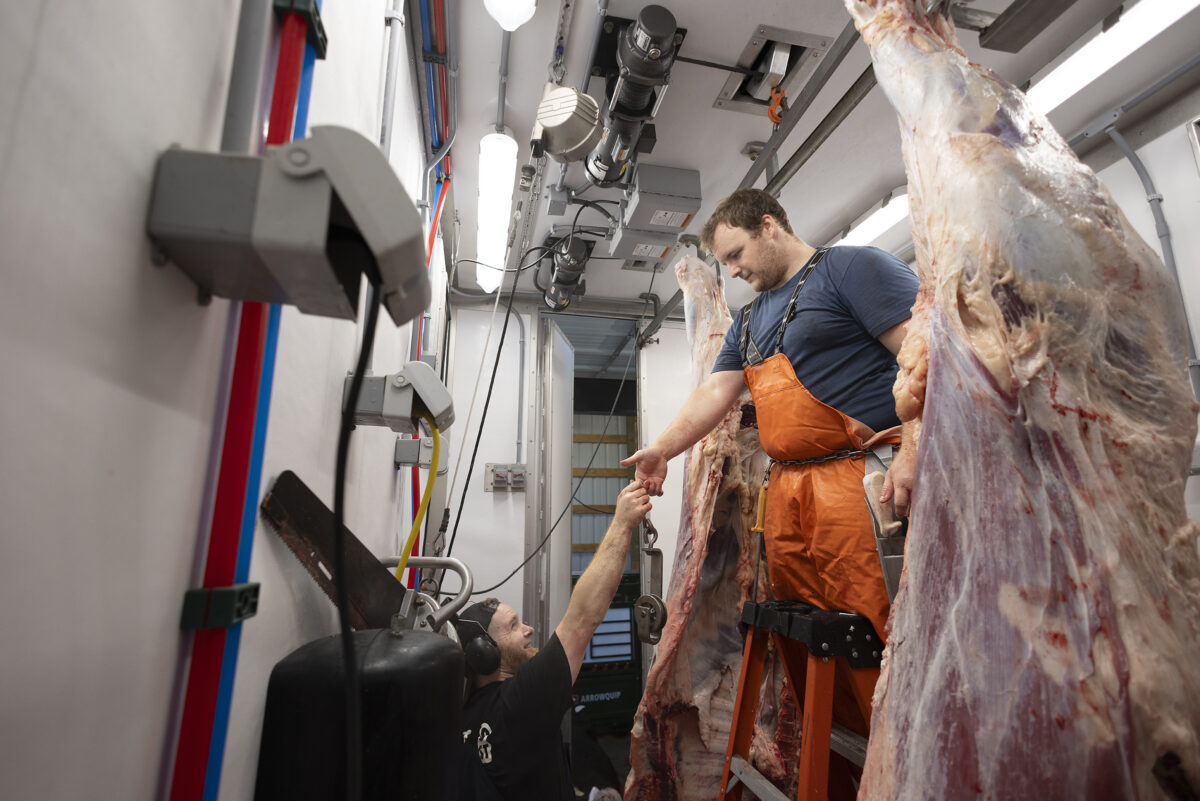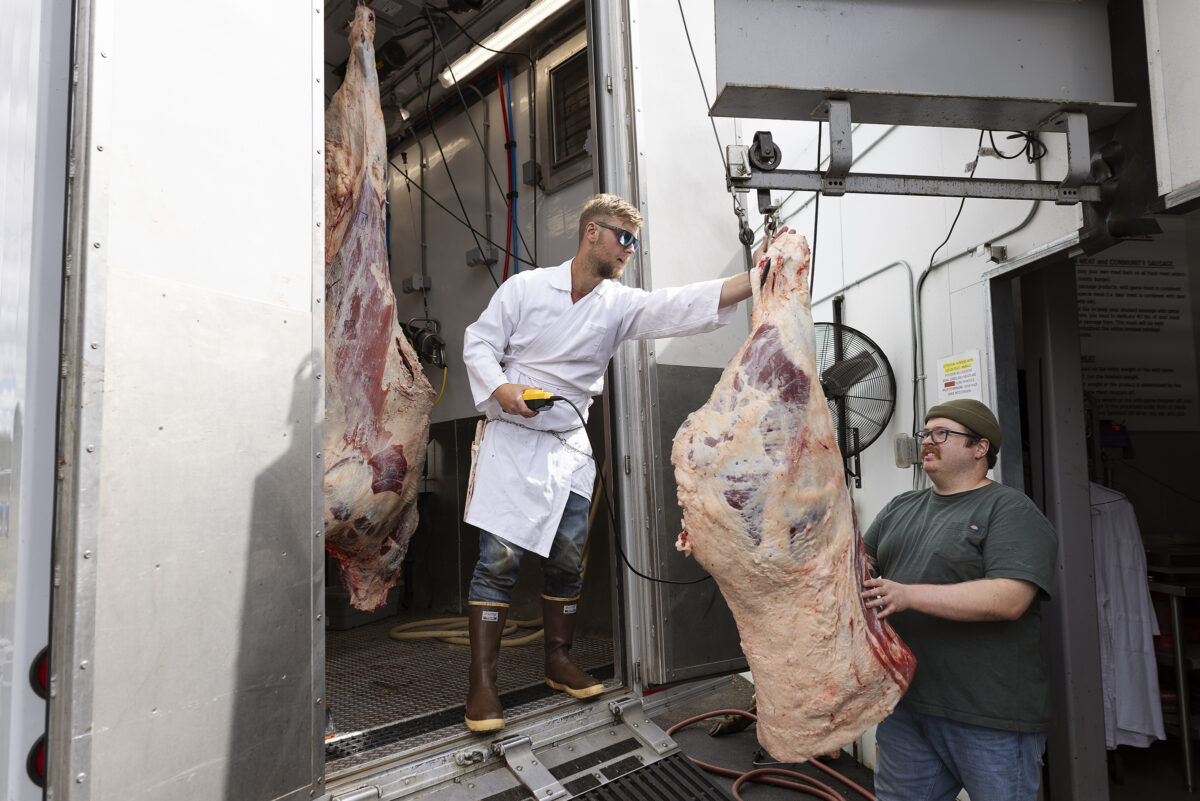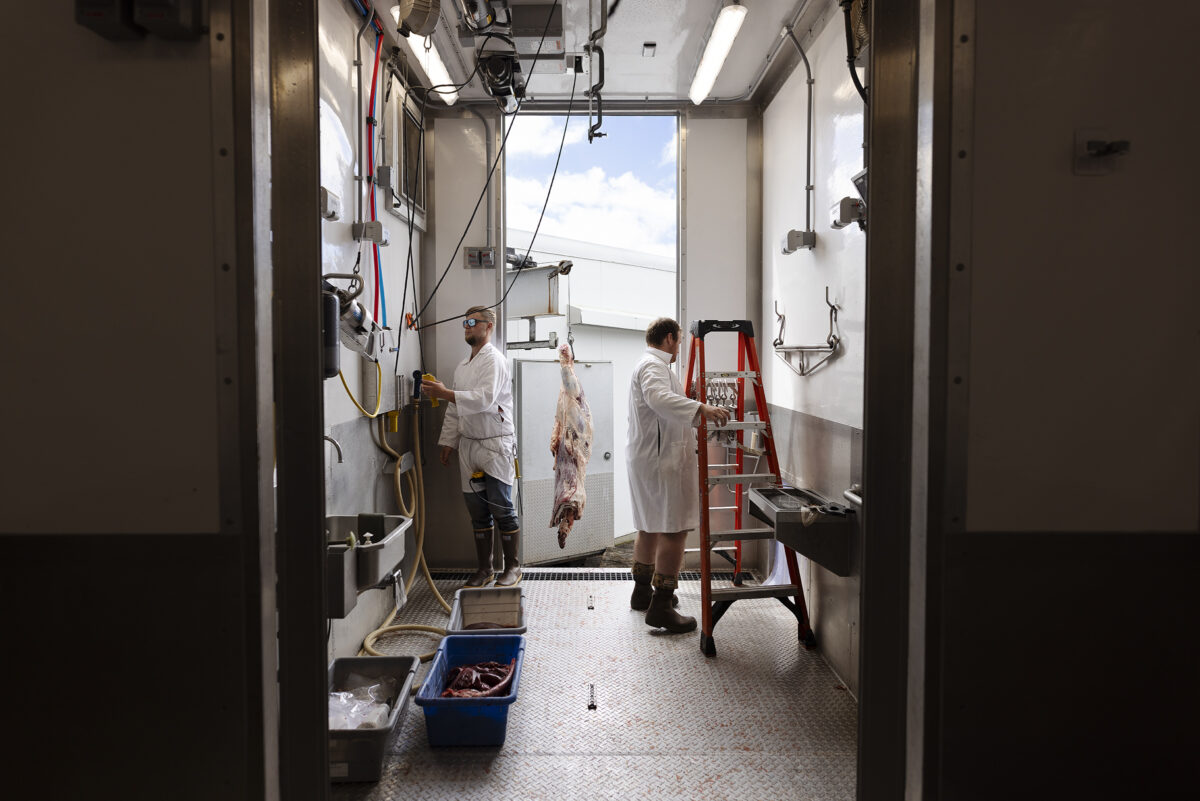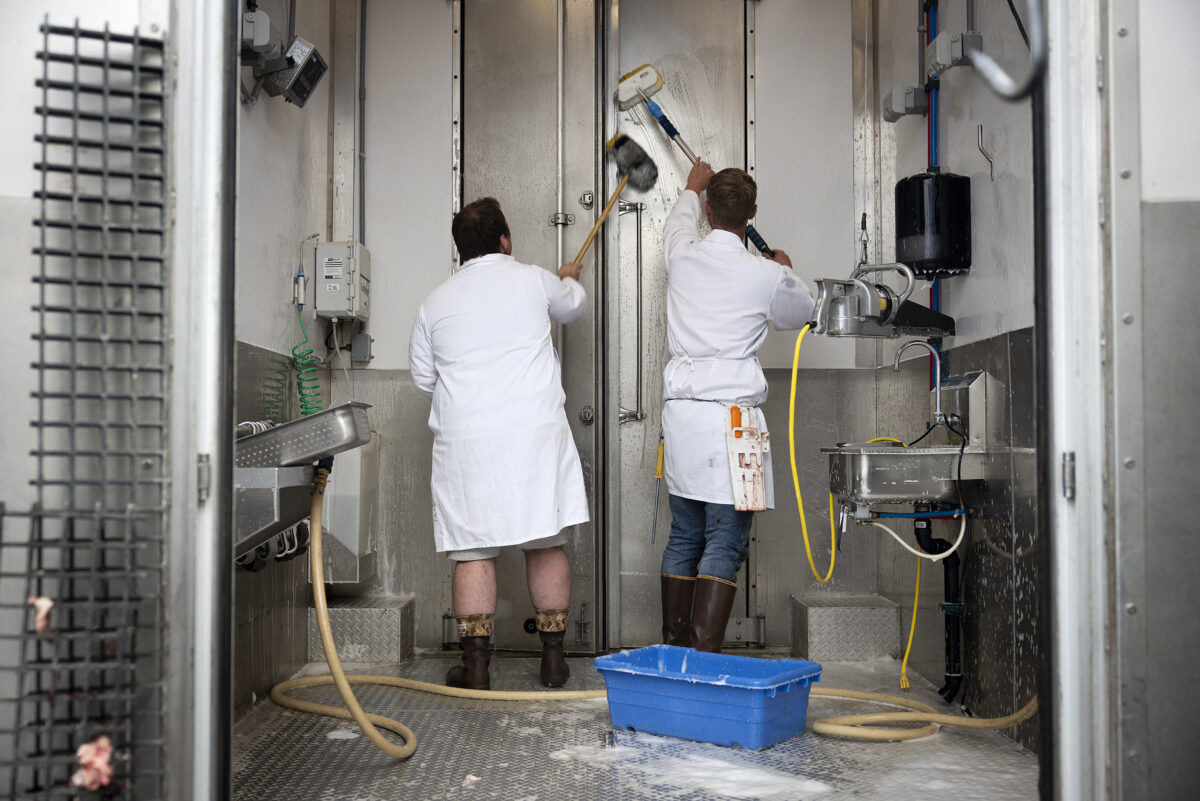Craft butcher shops used to be a staple in communities across America. Consumers had access to fresh, locally-produced meat, hand cut by butchers they knew at shops they trusted.
One-stop-shop supermarkets gained prominence and edged out independent butchers, bakeries, delis, and grocers. The meat they sold shifted from local to corporate—the result of ongoing consolidation in the meat industry.
Many independent butcher shops lost the battle. However, shops like The Meating Place in Hillsboro, Oregon—spurred by COVID-era shutdowns of corporate meatpackers—are leading a resurgence in independent, smaller-scale, local meat processing.
TRUE TO THEIR ROOTS
Founded by second-generation butcher Steve Crossley in a Portland suburb in 1974, The Meating Place’s reputation was built on their jerky, sausage, and wild game processing. As they grew, Steve built his team, hiring high school sophomore Casey Miller in 1993 as an apprentice.
When Steve retired and closed the shop in 1998, Casey continued honing his meat cutting craft in grocery stores—but Casey’s itch to “do something different in the meat industry” stuck with him.
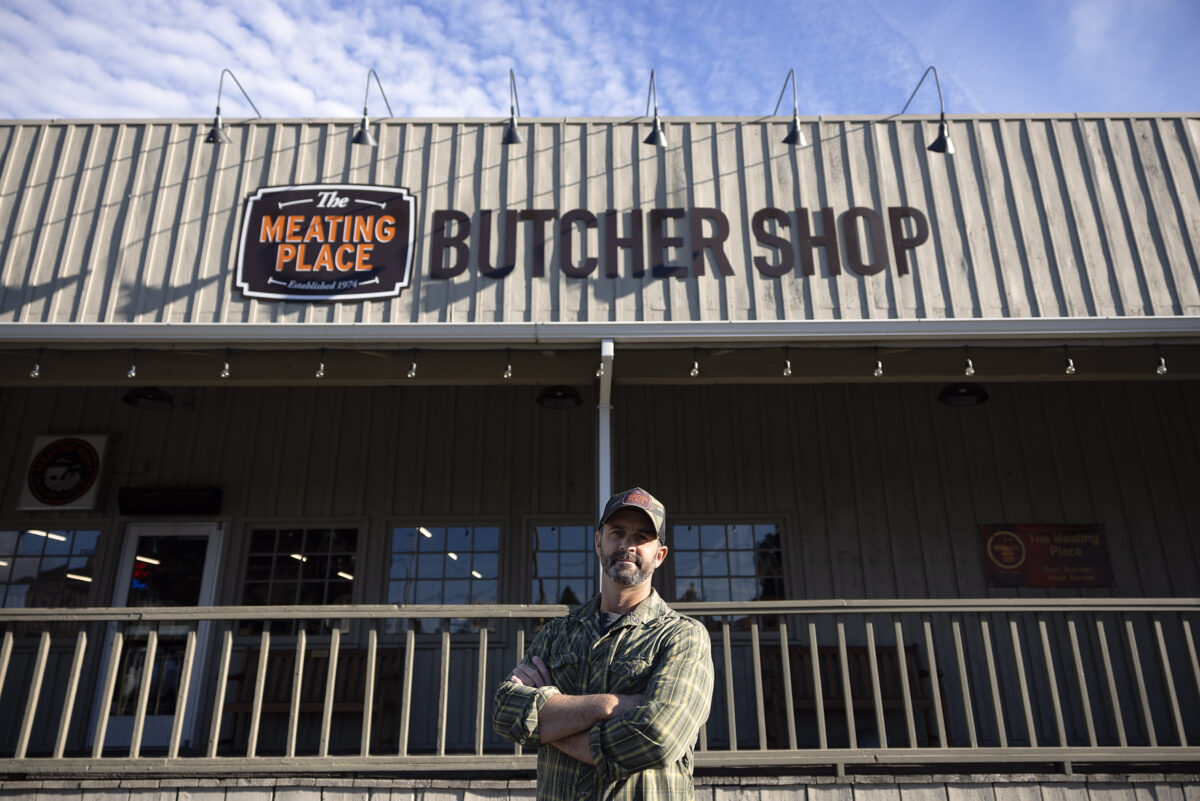
In 2011, Casey reopened The Meating Place as a small, seasonal custom exempt shop, processing wild game for hunters. Listening to his customers and his gut, he saw “a big need for an independent meat market” in his community.
“People wanted to shop somewhere besides their local grocery store to find meat,” Casey said, citing consumer demand for “locally-sourced meat cut by quality meat cutters, not out of a package or Styrofoam.”
UNLOCKING GROWTH
Two years later in 2013, Casey put his vision into action. He expanded his seasonal operation into a full-service retail butcher shop. “The demand was instant,” he reminisced.
Amid the butcher shop’s success, Casey explored additional avenues for growth. He opened The Meating Place Café, gaining rave reviews for their sandwiches and burgers. He also added custom exempt mobile slaughter to the butcher shop’s services, enabling them to harvest customers’ livestock on their farms and ranches.
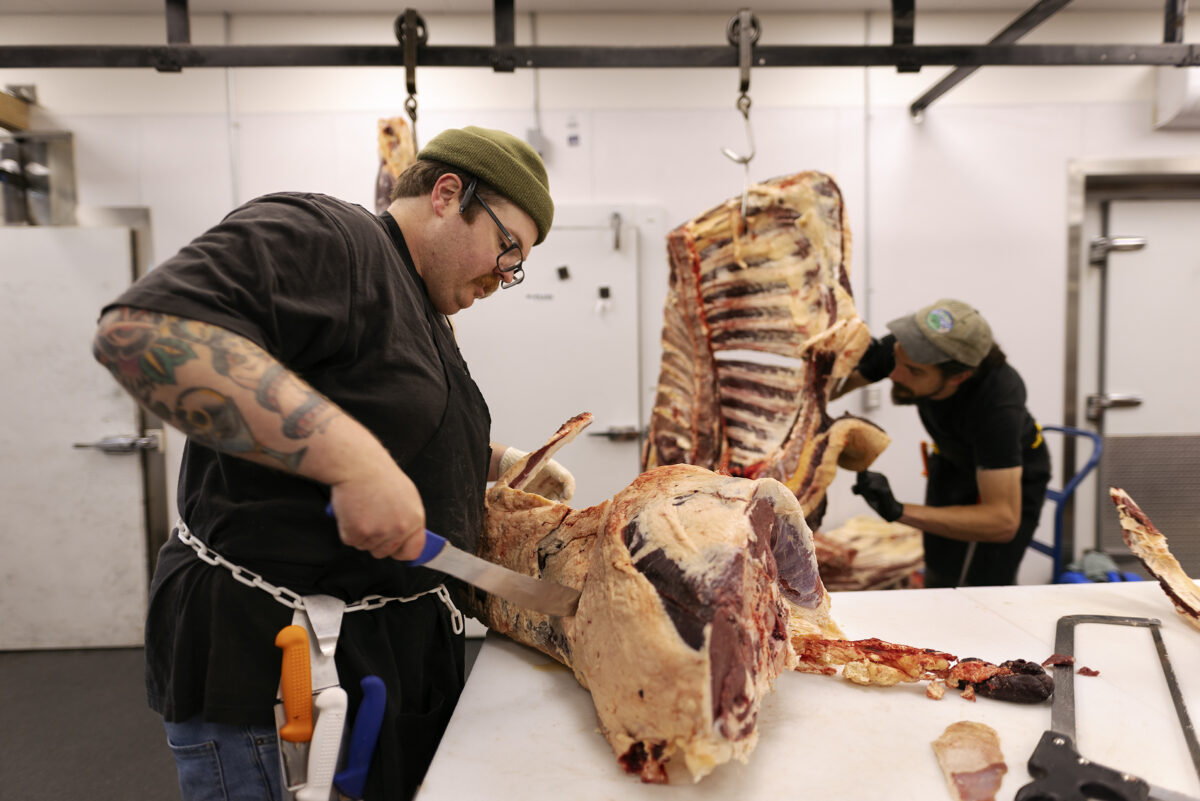

Andrew Turner, a recent Oregon State University graduate who had “fallen in love with meat processing” at OSU’s Meat Lab and interned in a USDA-inspected Mobile Harvest Unit, joined Casey’s team to operate the custom exempt mobile slaughter truck.
By 2016, The Meating Place had outgrown its butcher shop. Only three years after opening it, they upgraded to a facility five times the size, expanding to nearly 17,000 sqft.
Business was booming. And then came COVID-19.
THE COVID CATALYST
“When COVID first hit, there was a sense of panic and we didn’t know what was going to happen,” reflected Casey. “Within two weeks, we were so busy that we couldn’t keep up.”
During the first three months of the pandemic, The Meating Place hired nearly 20 new employees. As the virus spread, large meatpacking plants shut down or reduced output, causing nationwide meat shortages. Once this reached the Pacific Northwest, Casey recalled, “There was a huge meat shortage here in Portland. Major grocery stores couldn’t get meat.”
“When COVID first hit, there was a sense of panic and we didn’t know what was going to happen. Within two weeks, we were so busy that we couldn’t keep up.”
Casey Miller, Owner, The Meating Place
Casey got to work. Drawing on his meat industry connections, he secured a consistent supply of carcasses from a facility in neighboring Washington State.
“Every Tuesday, we would get a truckload of carcasses,” he said. “We were one of the only stores [in the Portland area] that had meat during that time, and we just exploded.”
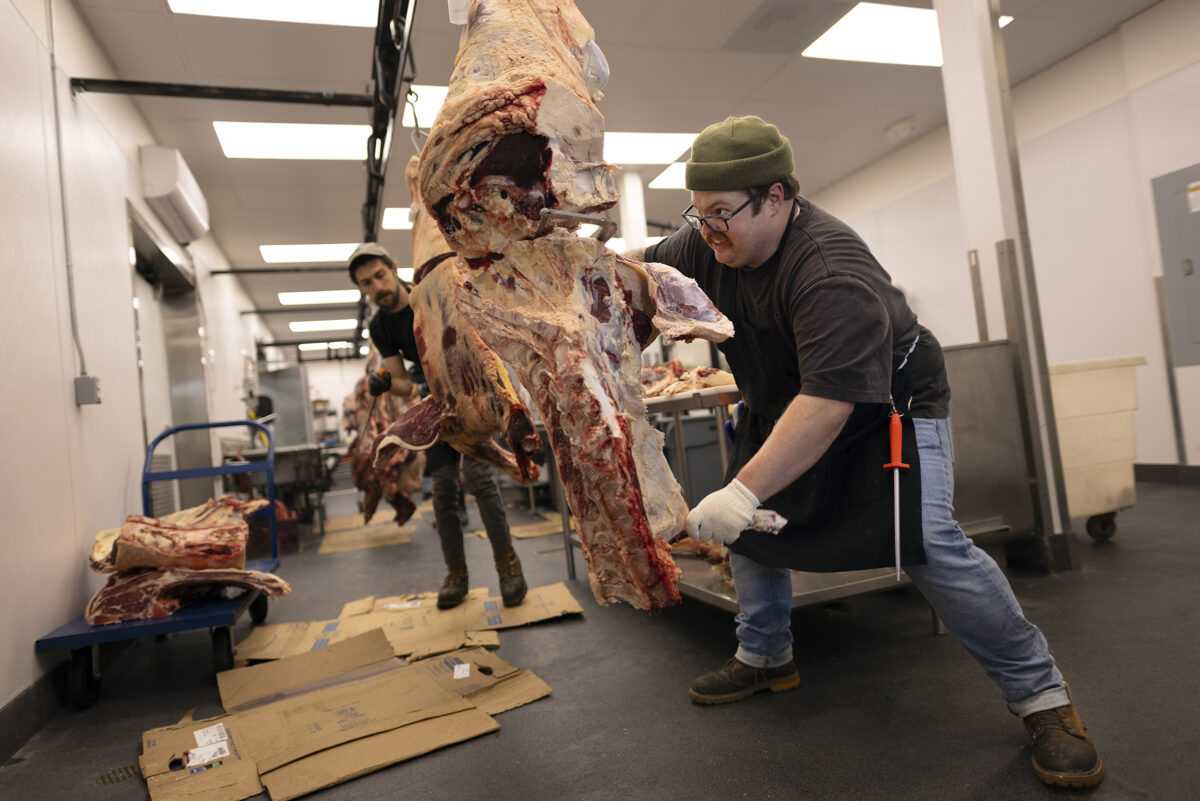
CONTROLLING SUPPLY
A year into COVID, The Meating Place had nearly doubled its pre-pandemic business. Post-COVID, the business and team continued to grow. Despite their success, Casey wrestled with the supply chain lessons they had learned.
“The meat shortage made me really realize that we were restricted by our supplier,” he explained. “Just because we’ve got the facility and we’re able to cut it—if we can’t get meat in the back door, we can’t push it out the front door.”
“The meat shortage made me really realize that we were restricted by our supplier. Just because we’ve got the facility and we’re able to cut it—if we can’t get meat in the back door, we can’t push it out the front door.”
Casey Miller, Owner, The Meating Place
Once COVID settled down, Casey found clarity. To maintain control of its supply, The Meating Place needed to vertically integrate its operations—from live animals to slaughter and sale.
“I realized we needed to be more vertical for sustainability, for our own insurance for the business,” he said. “That’s what gave us the first idea of going vertical—of raising our own beef and doing inspected slaughter.”
WHERE TO HARVEST?
With the butcher shop located in city limits, Casey and Andrew Turner—who had since become Manager of The Meating Place Commercial Processing—began exploring a separate site for raising livestock and incorporating a slaughter facility.
They zeroed in on a farm 14 miles from the butcher shop—the eventual home of Andrew’s Top Valley Cattle Company. Though it had the infrastructure for raising and finishing livestock, the farm lacked a facility that would allow them to slaughter beef for retail sale.
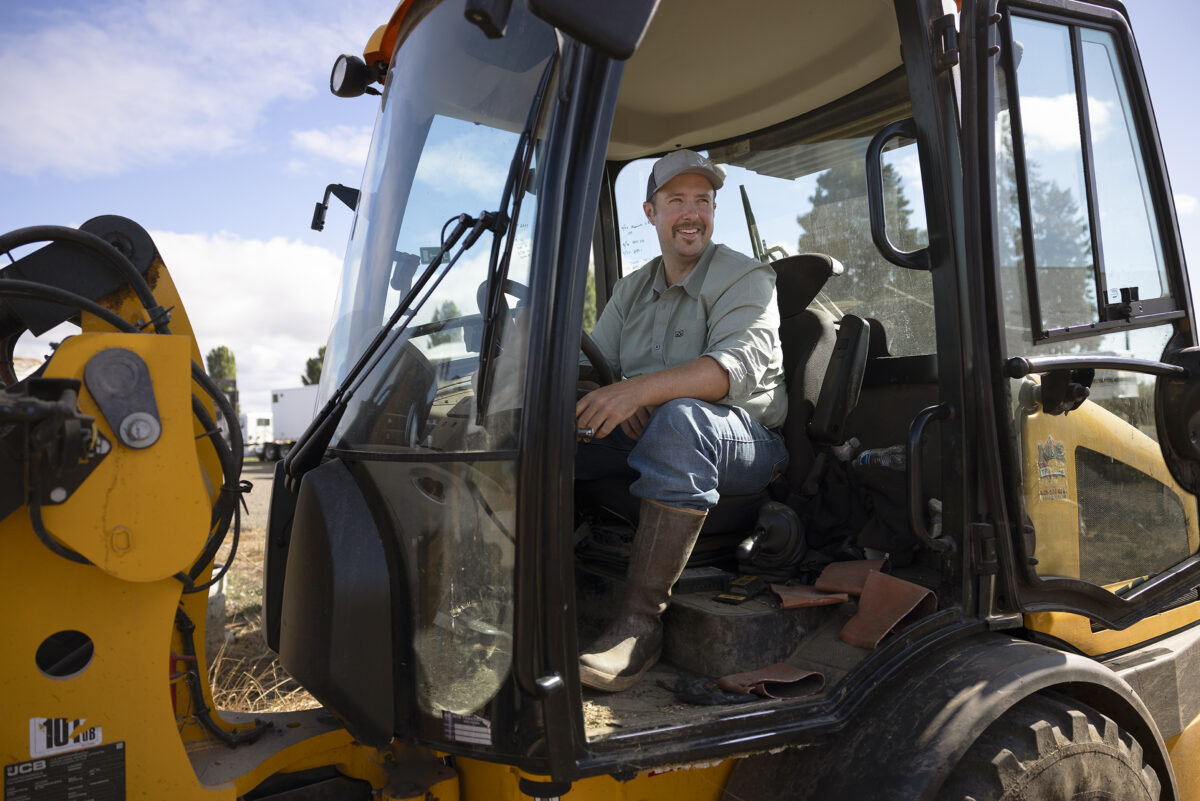
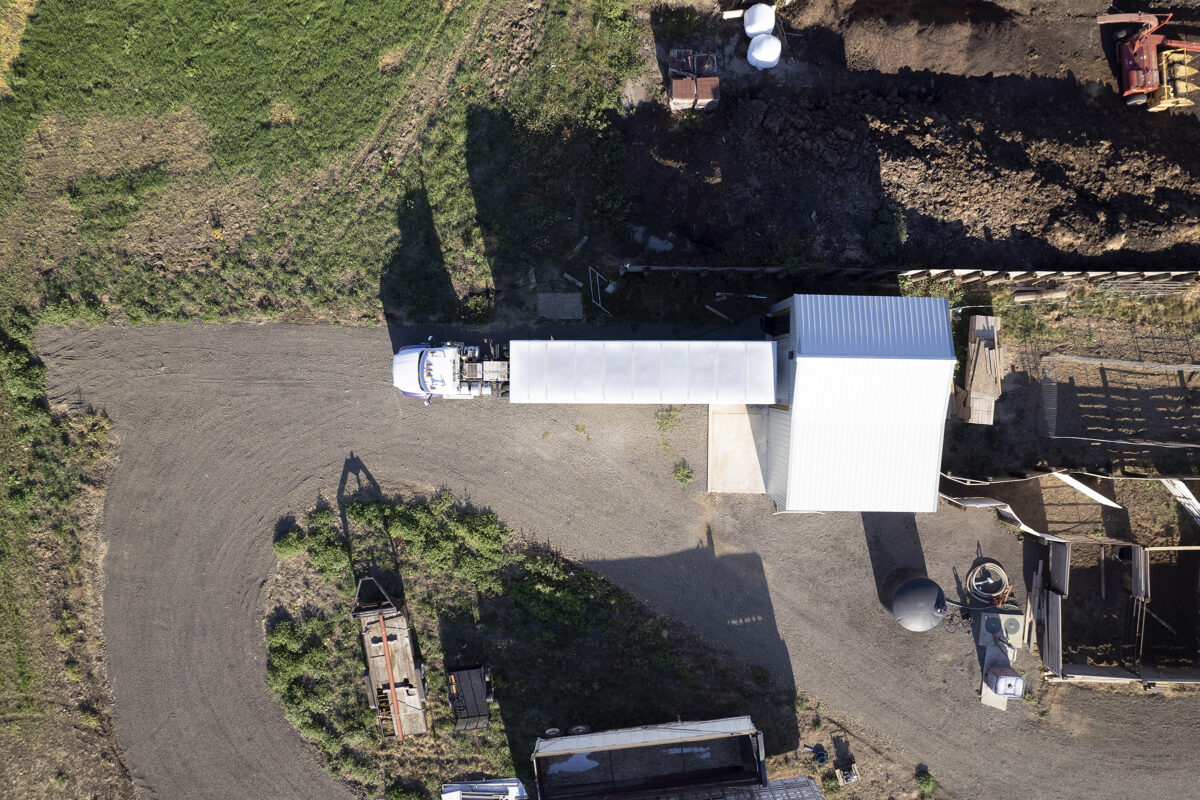

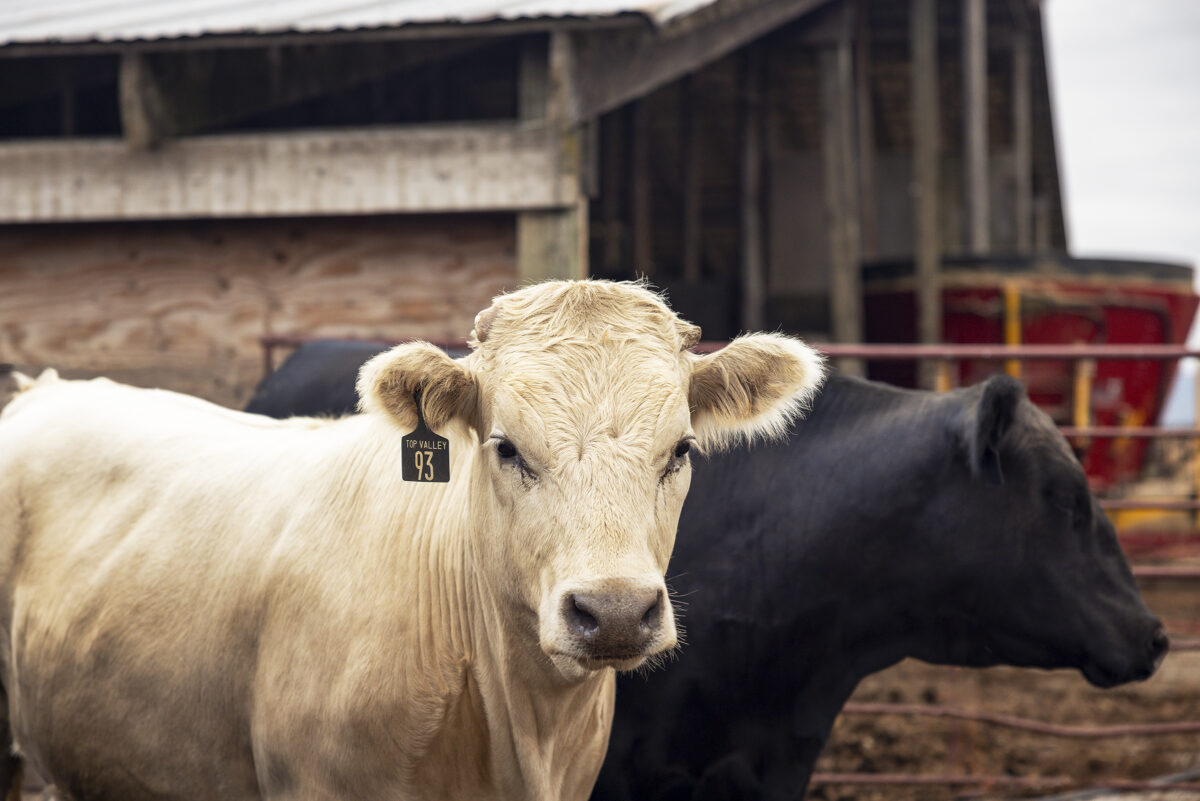
Andrew explored potential solutions. Options for harvest facilities were “pretty limited just due to the cost of building a brick and mortar [plant],” he said. Drawing from his positive experience interning in a Mobile Harvest Unit, he envisioned this trailer as their solution.
“What appealed about working in a Mobile Harvest Unit was that you didn’t have to have a standalone facility—that you could service farmers on their own property, and that you’d be able to make more of an impact with the meat produced.”
Andrew Turner, Owner, Top Valley Cattle Company
“What appealed about working in a Mobile Harvest Unit was that you didn’t have to have a standalone facility—that you could service farmers on their own property, and that you’d be able to make more of an impact with the meat produced,” Andrew explained.
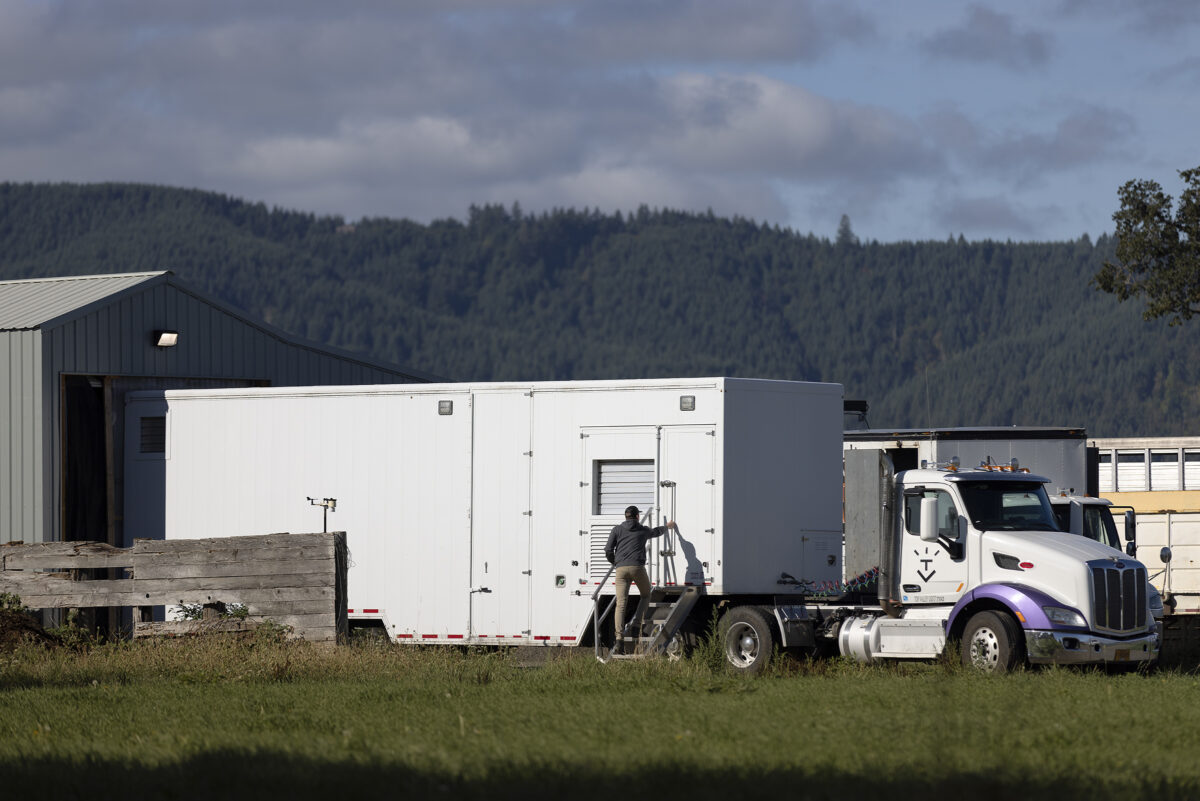
CHOOSING MOBILE
After weighing their options, Casey and Andrew decided to purchase a Friesla Mobile Harvest Unit. Casey referenced three primary reasons:
- Less expensive infrastructure than a brick and mortar slaughter facility.
- Refrigeration capacity for safely hauling carcasses from their slaughter site to current and future processing facilities.
- Geographic expansion—being mobile would give them freedom to expand their business and establish “slaughter depots” throughout their region rather than being confined to one site.
To help fund The Meating Place’s addition of a slaughter facility, Casey applied for and was awarded grant funding allocated by the Oregon Legislature in 2021. In parallel, he earned certification as the first state-inspected slaughter facility under Oregon’s new State Meat Inspection Program. Gaining the Oregon Department of Agriculture’s seal of approval now enables them to slaughter, process, and sell their branded Meating Right products statewide.
LOOKING AHEAD
Reflecting on this process, Casey sees the benefit of vertically integrating as reducing reliance on others to operate his business. He’s confident this strategy aligns with consumer demand.
“In Oregon, I see a trend going toward smaller processors and away from bigger processors, and I hope that’s mimicked throughout the country,” he said. “People have really evolved on what they’re looking for in food in general, not only meat, but produce and where they source their food from.”
“In Oregon, I see a trend going toward smaller processors and away from bigger processors … People have really evolved on what they’re looking for in food in general, not only meat, but produce and where they source their food from.”
Casey Miller, Owner, The Meating Place
“I take a lot of pride,” Casey continued, “in sourcing the best proteins that I can provide for the community. That’s one big thing we’ve taken up with raising our own beef—where we control it from raising the beef to slaughtering the beef and selling it directly to our community here in Hillsboro.”
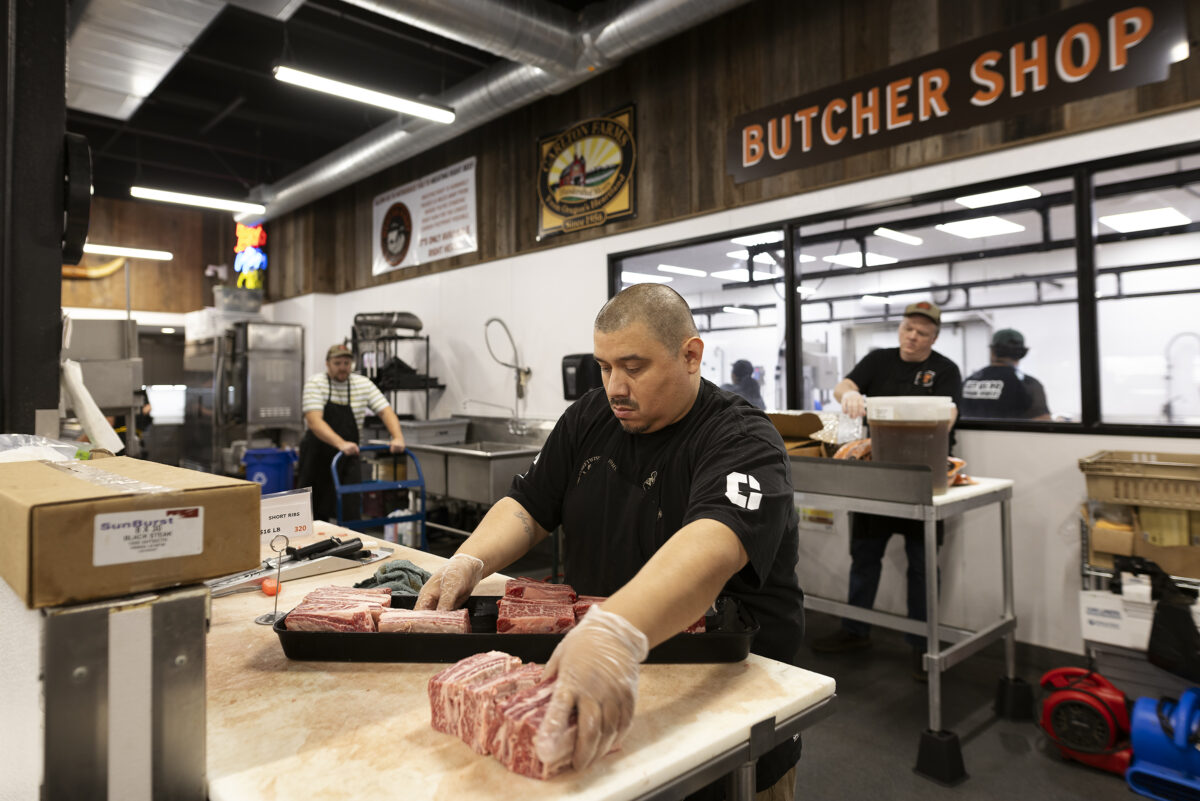
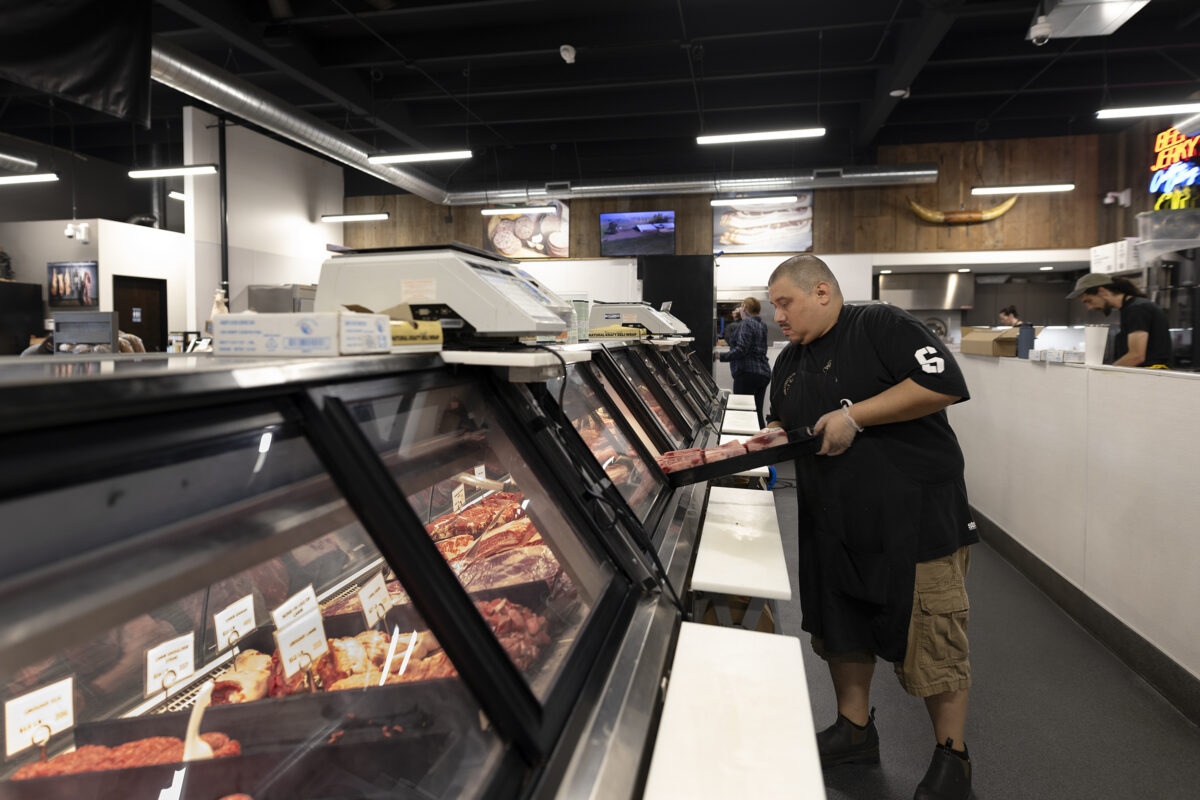
“There’s half a dozen hands that have a part of that whole process versus a giant corporation,” Andrew furthered, highlighting The Meating Place’s supply chain as a rarity in today’s meat industry. “There’s a huge pride in going into that retail store and seeing the Meating Right label on the beef in the case—it’s the realization of a 13- or 14-year dream.”
“There’s a huge pride in going into that retail store and seeing the Meating Right label on the beef in the case.”
Andrew Turner, Owner, Top Valley Cattle Company
Despite their past success, The Meating Place team isn’t resting on its laurels. “I’m hugely proud of what we’re doing,” Andrew said, “and really excited about where we’re going.”
Visit The Meating Place here. Learn more about Friesla’s Ecosystem of Services here.

